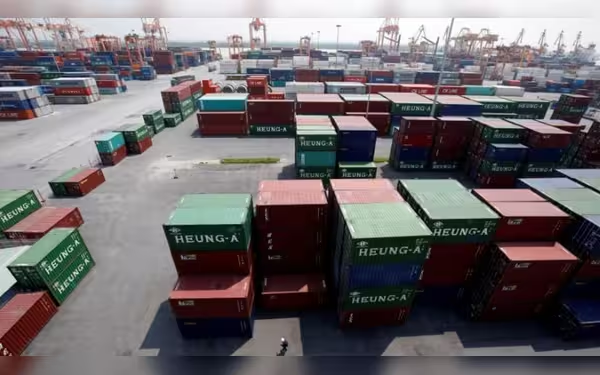Saturday, November 16, 2024 08:45 PM
Vietnam Achieves Highest Quarterly Growth in Two Years
- Vietnam's GDP grew by 7.4% year-on-year in Q3.
- Exports rose by 10.7% in September.
- Foreign investment inflows reached US$17.3 billion.
 Image Credits: channelnewsasia
Image Credits: channelnewsasiaVietnam reports 7.4% GDP growth in Q3, driven by strong exports and foreign investment despite Typhoon Yagi's impact.
Vietnam has recently reported a remarkable economic performance, achieving its highest quarterly growth in two years. This growth, which occurred in the third quarter ending in September, is attributed to strong exports, robust industrial production, and an increase in foreign investment. Despite facing challenges from Typhoon Yagi, which struck the region last month, the country has managed to maintain a positive economic trajectory.
According to the General Statistics Office, Vietnam's Gross Domestic Product (GDP) grew by 7.4 percent year-on-year in the third quarter. This figure surpasses the revised growth rate of 7.09 percent recorded in the previous quarter. Vietnam has established itself as a key manufacturing hub in the region, attracting multinational corporations such as Samsung Electronics and Apple suppliers like Foxconn and Luxshare. The influx of foreign investment has been steady, contributing significantly to the country's economic resilience.
The statistics office noted, "The world economy is stabilising as global trade in goods improves, inflationary pressures ease, financial conditions continue to loosen, and labour supply increases." This statement reflects a broader trend of recovery in global markets, which has positively impacted Vietnam's economy.
In September, exports rose by 10.7 percent compared to the previous year, while industrial production increased by 10.8 percent. Foreign investment inflows for the first nine months of the year reached US$17.3 billion, marking an 8.9 percent increase from the same period last year. However, the country is still grappling with the aftermath of Typhoon Yagi, which resulted in over 300 fatalities, disrupted power supplies, and halted industrial production. The estimated property damage from the storm stands at US$3.3 billion.
Despite these challenges, the manufacturing sector faced a setback, as indicated by S&P Global's purchasing managers index (PMI), which fell to 47.3 in September from 52.4 in August. This decline represents the most significant drop in the sector's health since November of the previous year. Andrew Harker, a director at S&P Global Market Intelligence, stated, "The storm brought an end to a period of strong growth in the sector," highlighting the impact of heavy rain and flooding on business operations.
Vietnam has set an ambitious target for GDP growth between 6.0 percent and 6.5 percent for the year, with a goal to keep inflation below 4.5 percent. Consumer prices in September rose by 2.63 percent compared to the previous year, while retail sales increased by 7.6 percent. For the first nine months of the year, exports surged by 15.4 percent to US$299.63 billion, while imports rose by 17.3 percent to US$278.84 billion, resulting in a trade surplus of US$20.79 billion.
The International Monetary Fund (IMF) has forecasted Vietnam's GDP growth at 6.1 percent for this year, while the Asian Development Bank (ADB) has projected it at 6.0 percent. Both institutions noted that this growth is supported by strong external demand, resilient foreign direct investment, and accommodating policies. However, they also cautioned that geopolitical tensions and uncertainties could pose risks to external demand, which is a crucial driver of Vietnam's economic growth.
Vietnam's economic outlook remains promising despite recent challenges. The country's ability to attract foreign investment and maintain strong export performance is commendable. As Vietnam continues to navigate the complexities of the global economy, it is essential for policymakers to remain vigilant and adaptable to ensure sustained growth and stability in the future.













